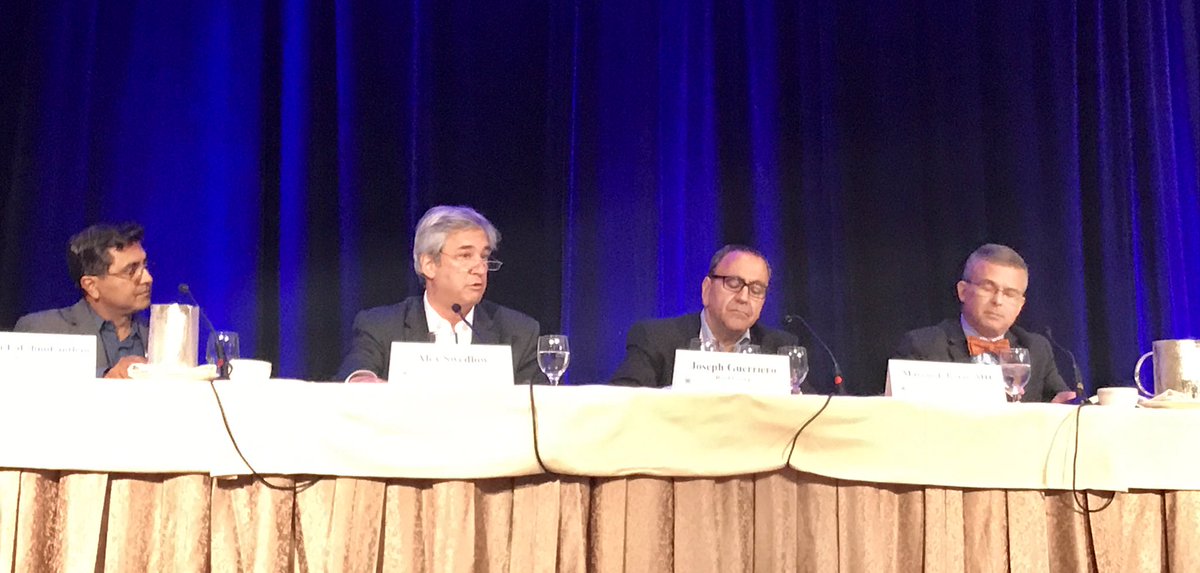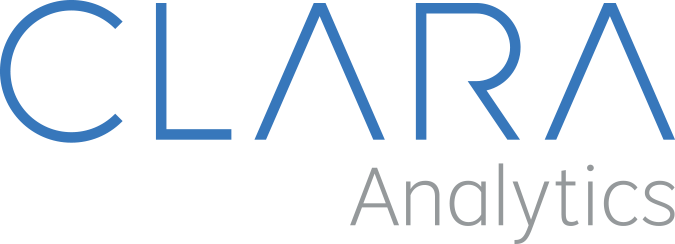Continuing the Conversation on the Opioid Crisis
The extent and seriousness of the opioid problem has been well-published. It’s time now to take action. I was honored to moderate a panel at this year’s CWC and Risk Conference in Dana Point to discuss ways to attack this problem head-on.
The panel couldn’t have been better and included:
- Alex Swedlow, President, California Workers’ Compensation Institute
- Joseph Guerriero, Senior Vice President, Reed Group
- Dr. Marcos Iglesias, Senior Vice President and Chief Medical Officer, Broadspire
Lots of information was shared, and we promised the terrific audience that we would share the details after the conference in a blog. The goal of this blog is two-fold. First, we want to include details from the panel discussion that were impossible to note. Second, we want to use this as a forum to continue the dialog that was started. Let’s use this as an informal forum to share our thoughts and learnings. The opioid problem is a multi-faceted problem and needs a multi-faceted response. It’s only our collective smarts that can help put a dent in it. We tried our best to include all the critical information and synthesize it into key insights. Please treat this as a work-in-progress, and let us know your thoughts/edits as well.
So here it is …
Where Are We in the Battle?
Opioid use has taken an interesting path since the early 2000s when 25 percent of prescriptions in the U.S. were opioid prescriptions, and 20 percent of the spend on prescriptions was from opioids.
This grew to 32 percent in 2010 before it started to correct itself. Today, we’re in the fifth year of a decline, and we’re back to 25 percent of prescriptions being opioid prescriptions, contributing to 20 percent of the spend.
Analgesic Opioid Prescriptions & Payments in California[1]
CWCI 2017. All Rights Reserved
A study performed in 2008 showed that a small set of physicians caused the opioid issue. According to the study, approximately 200-250 out of a sample of 6,000 physicians (3-4 percent) wrote two-thirds of all the Schedule II prescriptions.
The 2010 watermark has suggested that the opioid problem is getting better in workers’ compensation as we have observed 25 percent lower morphine equivalence now than before. This is a direct result of payers, managed care members and pharmacy benefit managers doubling down on the right things.[2]
In 2013, there were a total of 1 million prescriptions. Twenty-five percent of claims on average across the board received opioids. However, there has been a lot of variation in opioids across regions as well, with King’s County observing 40 percent of their claims with opioids and Napa Valley seeing 14 percent of their claims getting opioids.[3]
Statewide Variation: Opioid Scripts per County[4]
CWCI 2017. All Rights Reserved
This variation can be seen in opioid prices as well.
Average Cost per Brand and Generic Prescription of Analgesic Opioids[5]
CWCI 2017. All Rights Reserved
A study was performed in 2008[6] to learn about the differential impact of varying doses of opioids on an injured worker population.
A cohort of lower back injury claims was split into five groups:
- Group 1: did not get any opioids.
- Group 2: got a 1-2 day supply of opioids.
- Groups 3-5: received an accelerated volume of opioids, with the fifth group getting such a large dosage that the mere fact that they weren’t unconscious was astonishing.
The results: When compared to the group that got no or very low levels of opioids, high-end users had:
- 3x higher claim costs
- 4.6x more lost-time days from work
- 84 percent more likely to be involved with litigation
The realization that opioids are a problem has started seeping into our collective consciousness. However, there’s lot more to be done.
What Are the Battlefronts?
“For most of my surgical career, I gave out opioids like candy. My colleagues and I were unaware that about 1 in 16 patients become chronic users, according to new research by doctors at the University of Michigan. Even more alarming, research shows that relapse rates after opioid addiction treatment could be as high as 91 percent. In addition to expanding treatment, it’s time we address the root of the problem — overprescribing.
“My own aha moment came recently after my father had gallbladder surgery and recovered comfortably at home with a single ibuprofen tablet. Wow. It directly contradicted my residency training 15 years ago, when I was taught to give every surgical patient a prescription for 30-90 opioid tablets upon discharge. Some of my mentors told me that overprescribing prevents late-night phone calls asking for more. The medical community at that time ingrained in all of us that opioids were not addictive and urged liberal prescribing. So that’s exactly what we did.
“Too many Americans are leaving the hospital with bottles full of opioid tablets they don’t need.
“We need to take away the matches, not put out the fires. …”
– Dr. Marty Makary, Professor of Surgery and Health Policy at the Johns Hopkins School of Medicine in Baltimore[7]
Preventing opioid prescriptions is largely about provider education. While it is useful to educate patients, they will typically follow the guidance of their providers.
A whole generation of providers was trained with a mindset similar to the one that Dr. Makary describes above. To reverse the trend, providers need to get out of old prescriptive habits.
1. Providers need to rely on evidence-based medicine (EBM) guidelines at the point of care and get a good understanding of what EBM really is. Every doctor practices under some guidelines — whether it’s things they learned, been trained in or practice. EBM will help inform those guidelines. EBM is not something that will replace them or their ideas. Today, doctors are getting trained differently, and that’s really the root cause of the issue.
According to Becker’s Hospital Review, two out of the top five drivers of cost in healthcare are variations of care. This is a problem that needs to be looked into big time.
The initial doctor-patient interaction is extremely important. The outcome of a claim is significantly better when the first point of contact is the right one. Therefore, educating the first doctor is key to success.
Prescribers should focus on three things:
a. Prescribe fewer opioids – The U.S. comprises 4 percent of the world’s population but accounts for 80 percent of the opioid prescriptions.
b. Prescribe opioids for fewer days – Claimants that are given a one-day supply of opioids are 6 percent likely to be using an opioid a year later. That number quadruples to 25 percent when they are given 12 days’ worth and goes up to 30 percent when it’s a 30-day prescription. We routinely see 30-day prescriptions. This is why the CDC recommends a three-day limit for opioids in the acute setting.
c. Lower the morphine equivalence doses – 90 mg of morphine daily (or its equivalent) increases the risk of overdose death by a factor of ten compared with doses <=50 mg. The lowest amount of opioid should be prescribed.
The concept of Number Needed to Treat (NNT) is important to put things in perspective. NNT refers to the number of patients you need to prescribe a treatment to before you see the desired result.
Here’s the startling comparison of NNT for various pain treatment protocols (achieving 50 percent improvement in pain):
· Oxycodone 15 mg (OxyContin) – 4.7 (You need to treat 4.7 patients before one patient sees a 50 percent improvement in pain.)
· Oxycodone 10mg / Acetaminophen 650 mg (Percocet) – 2.7
· Ibuprofen 200 mg (OTC Advil) plus Acetaminophen 500 mg (OTC ES Tylenol) – 1.6
Not only are opioids dangerous, they often don’t provide the desired results.
2. Providers need to be willing to change the culture and educate their patients on the need to focus on function instead of pain.
Redirect conversations about pain to function. Why?
Pain gets worse when we focus on it. The claimants are going to tell you about the pain anyway. Why ask? And what are you going to do with that information anyway?
Instead — redirect to function.
Twenty years ago there was a study done of low back pain.[8] The paper distinguished between pain and suffering, noting that pain is physiological but suffering is psychological. A famous quote ended the study pointing out that “People who have something better to do, suffer less.”
Another study examined 1,000 patients who were asked if they wanted opioids, and 29 percent said no! Forty-two percent of patients confirmed that they were given oxycodone.
It’s crucial that claimants are educated in a simple way. No one reads paperwork and prescription inserts. Instead, the relevant information should be communicated to them by their provider and adjusters.
3. Focus on early detection – Implement tools to get early signals for opioid problems. Get in front of the issue by responding fast.
Several indicators can be used for these early warnings:
· Days supplied of opioids
· Time based – duration of prescriptions
· Abuse deterrent formulations – compare actual vs. expected prescriptive patterns
· Refill too soon – evidence of rapid refills
· Urine drug testing results
What Are the Priority Areas to Focus on?
We are proposing four key areas to address right now:
- Have a sense of urgency about understanding the issue and acting on it. Awareness of the opioid epidemic is high, but we need to take action now.
- Understand what evidence-based guidelines are regarding opioid usage and how they should be applied to doctors’ personal guidelines at the point of care.
- Don’t ask about pain, and redirect talks about pain to functions.
And here’s one that we discussed right after the session ended with a few in the audience.
· Use an iterative approach. Set up a measurement interval to evaluate results (e.g., percentage of prescriptions with opioid prescriptions). Every 30 or 60 days, focus on 1-2 approaches (e.g., executing a communication package to all providers in your network). Measure results at the end of the 30- or 60-day period and iterate. Try a new approach if one doesn’t work. Double-down on ones that do.
Looking forward to comments.
###
Jayant Lakshmikanthan is the president and founder of CLARA Analytics. At CLARA Analytics, his focus is on using the power of scalable, cutting-edge data science to transform the injured workers’ experience dramatically by shaving off every day/hour/minute in the process of getting them back to being productive. Jayant has architected more than 30 scalable analytic applications and products and holds multiple patents. Visit www.claraanalytics.com/ and follow CLARA Analytics on LinkedIn, Facebook and Twitter.
[1] CWCI 2016
[2] CWCI 2016
[3] CWCI 2016
[4] CWCI 2016
[5] CWCI 2016
[6] “Pain Management and the Use of Opioids in the Treatment of Back Conditions in the California Workers’ Compensation System,” CWCI, 2008
[7] “Doctors can stop the opioid crisis by not over-prescribing,” Courier Journal, August 2017
[8] “Low Back Pain,” Richard A. Deyo, M.D., M.P.H., and James N. Weinstein, D.O., N Engl J Med 2001; 344:363-370.




